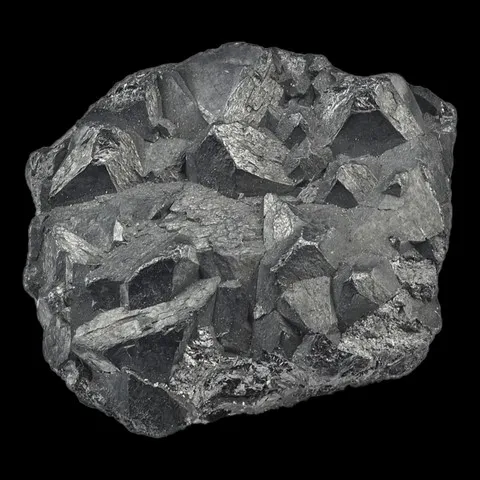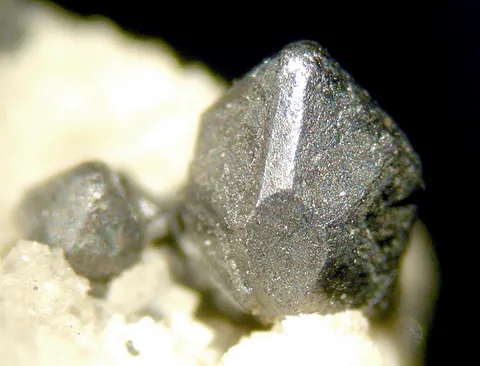ARGYRODITE
Class : Sulfides and sulfosalts
Subclass : Sulfides
Crystal System : Orthorhombic
Chemistry : Ag8GeS6
Rarity : Very rare
Argyrodite is an extremely rare silver and germanium sulfide, known in low-temperature silver-bearing hydrothermal veins. Tin can completely replace germanium, creating a complete solid solution with canfieldite. Its name comes from the Greek arguros (silver) in connection with its chemical composition. It forms very rare pseudo-octahedral, cubic or dodecahedral crystals. These are often millimetric (but 18 cm giants have been recorded), and frequently gathered in radiate aggregates, encrustations or botryoidal masses. The tint is dark gray with reddish or bluish undertones, but the mineral is photosensitive and quickly tints with a black tarnish. This light corrosion is an excellent criterion for microscopic determination. It is a very accessory ore of tin and silver.
Main photo : Argyrodite from Colquechaca, Potosi, Bolivia © John R. Montgomery
Argyrodite in the World
Right photo : Argyrodite from Colquechaca, Potosi, Bolivia © Van King
Twinning and special crystallizations
Argyrodite may show twins on {111}
Fakes and treatments
No fake or treatments identified for this mineral species.
Hardness : 2.5 to 3
Density : 6.29
Fracture : Irregular
Trace : Gray, black
TP : Opaque
RI : -
Birefringence : -
Optical character : -
Pleochroism : None
Fluorescence : None
Solubility : -
Magnetism : None
Radioactivity : None


